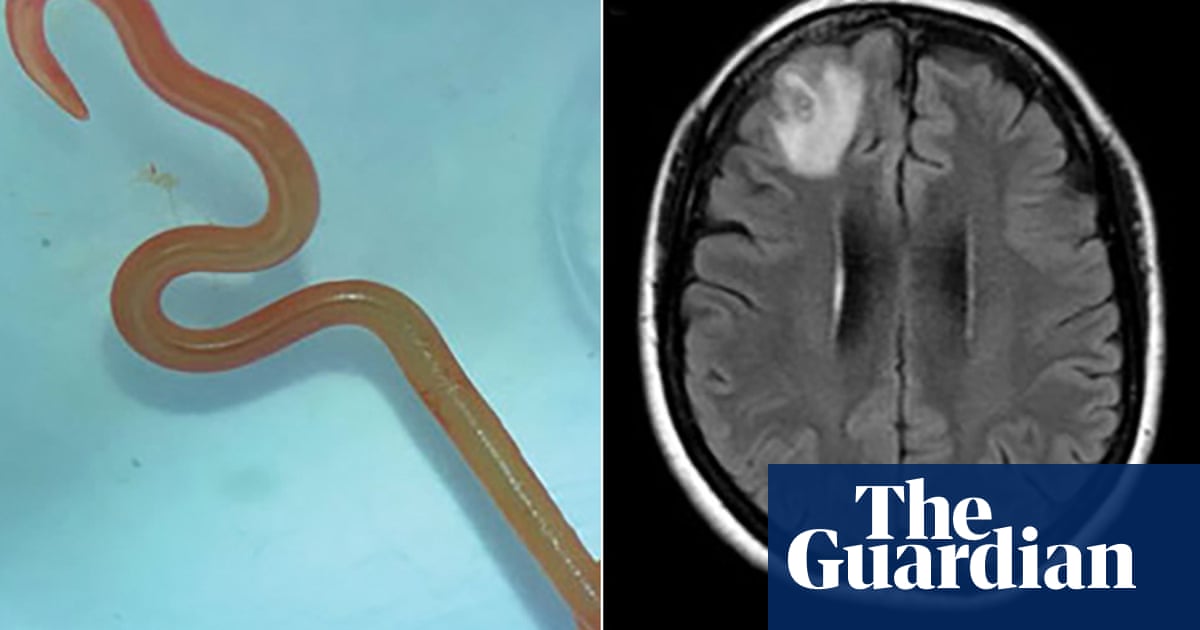- cross-posted to:
- news@kbin.social
- technews@radiation.party
- hackernews@derp.foo
Woman complained of forgetfulness and depression before doctors pulled out an 8cm roundworm normally found in pythons

Nature why are you like that?

new fear unlocked

you’ll forget about it in a minute

Because there is no conscious force guiding it

Also based on the picture it was in the right pre frontal cortex. Interesting because most people won’t have much in terms of neurologic symptoms with a lesion here, outside of some subtle mood and executive dysfunction issues maybe. You won’t get like language problems, weakness, numbness, vision loss etc or more obvious symptoms like you would with brain damage other places. Worm found a stealthy spot in the brain to hide in.
Wonder if they normally hang out in one of the cortex areas of the pythons.

Plot twist: this is an ARG for Larian’s new hit, Baldur’s Gate 3, which include brain worms as part of the main plot

Really ?

For the bit about brain worms being plot important? If so, yep! It’s pretty much the premise of the intro; you’re kidnapped by Lovecraftian-esque beings called “mind flayers” who take you aboard their organic spaceship and have one of their tadpoles wriggle into your brain. Hijinks ensue, and can include tough choices such as “do you resist your violent urges or cut off the funny magic man’s hand?”, “should you condemn a child to death because they committed petty larceny?”, and “do you want to have fuck with the bear?”

Shit I have to play this

Game of the year no cap

So the worm was eating her memories and happiness.
Neat!

Sounds like a futurama episode

Like the infosquitos: “this guy sure loves porno!”

TIHI


That’s not world news, just spoilers for an upcoming Chubbyemu video!

A Woman Collected Grass. This Is What Happened To Her Brain.
This Is Your Brain On Grass.

High worm presence in brain.

Uuuhh hyperserpentcerebrum
This is the best summary I could come up with:
It was a fairly regular day on the ward for Canberra hospital infectious diseases physician Dr Sanjaya Senanayake, until a neurosurgeon colleague called him and said: “Oh my god, you wouldn’t believe what I just found in this lady’s brain – and it’s alive and wriggling.”
The neurosurgeon, Dr Hari Priya Bandi, had pulled an 8cm-long parasitic roundworm from her patient, prompting her to call on Senanayake and other hospital colleagues for advice about what to do next.
The patient, a 64-year-old woman from south-eastern New South Wales, was first admitted to her local hospital in late January 2021 after suffering three weeks of abdominal pain and diarrhoea, followed by a constant dry cough, fever and night sweats.
The surprising discovery prompted a team at the hospital to quickly come together to uncover what kind of roundworm it was and, most importantly, decide on any further treatment the patient might require.
Senanayake, who is also an infectious diseases expert based at the Australian National University, said the patient needed to be treated for other larvae that might have invaded other parts of her body, such as the liver.
The patient is recovering well and is still being regularly monitored, Senanayake said, and researchers are exploring whether a pre-existing medical condition that caused her to be immunocompromised could have led to the larvae taking hold.
The original article contains 803 words, the summary contains 224 words. Saved 72%. I’m a bot and I’m open source!

I wish this article talked about how they are treating it? They just said she is doing well
With the actual worm they pulled it out and presumably cleaned up the bit of her brain where it resided.
For the rest I guess they made her take something that kills nematode parasites, and some strong anti inflammatories?
said the patient needed to be treated for other larvae that might have invaded other parts of her body, such as the liver. But given no patient had ever been treated for the parasite before, care was taken. Some medications for example could trigger inflammation as the larvae died off. Inflammation can be harmful to organs such as the brain, so they also needed to administer medications to counteract any dangerous side-effects.

Yeah I just wish they had gone into detail since this was a groundbreaking medical discovery
I got you fam. From the case write up:
In June 2022, she underwent an open biopsy. We noted a stringlike structure within the lesion, which we removed; it was a live and motile helminth (80 mm long, 1 mm diameter) (Figure 2, panels B, C). We performed a circumferential durotomy and corticotomy and found no other helminths. Histopathology of the dural tissue revealed a benign, organizing inflammatory cavity with prominent eosinophilia.
We provisionally identified the helminth as a third-stage larva of Ophidascaris robertsi on the basis of its distinctive red color, 3 active ascaridoid-like lips, presence of a cecum, and absence of a fully developed reproductive system, in the context of the known epidemiologic distribution of this species. The head and tail were preserved at the Australian National Wildlife Collection (W/LHC no. N5758). Small segments underwent independent PCR-based sequencing targeting the cytochrome oxidase c subunit 1 (cox1) (5,6) at the University of Sydney and the second internal transcribed spacer (ITS) 2 of nuclear ribosomal DNA (7) at the University of Melbourne. Both sequencing results provided >99.7% sequence match to Ophidascaris (formerly Amplicecum) robertsi isolates in the National Center for Biotechnology Information and in-house databases (Appendix).
A progress CT scan revealed resolution of pulmonary and hepatic lesions but unchanged splenic lesions. The patient received 2 days of ivermectin (200 µg/kg/d) and 4 weeks of albendazole (400 mg 2×/d). She was given a weaning course of dexamethasone (starting 4 mg 2×/d) over 10 weeks, while all other immunosuppression was discontinued. Six months after surgery (3 months after ceasing dexamethasone), the patient’s PBEC remained normal. Neuropsychiatric symptoms had improved but persisted.
And this bit from the conclusion:
After we removed the larva from her brain, the patient received anthelmintics and dexamethasone to address potential larvae in other organs. Ophidascaris larvae are known to survive for long periods in animal hosts; for example, laboratory rats have remained infected with third-stage larvae for >4 years (4). The rationale for ivermectin and albendazole was based on data from the treatment of nematode infections in snakes and humans (8,9). Albendazole has better penetration into the CNS than ivermectin (10). Dexamethasone has been used in other human nematode and tapeworm infections to avoid deleterious inflammatory CNS responses following treatment (11).
It’s always dexamethasone.
I sure hope we don’t get a bunch of stuff developing immunity to that.
So we got covid, Canada and Hawaii burning, a hurricane in southern California, a right wing insurrection in the US, and microplastics in everything. What’s next? Brainworms, of course!

Depression is caused by worms not by chemical imbalance I been constantly told, unbelievable

I always thought it was mainly hyperbole about everything in Australia tries to kill you.

Fox News viewer for sure.

Let’s eat some python poop. What could go wrong?

Just one more scary nature reason why I’ll never visit Australia.






